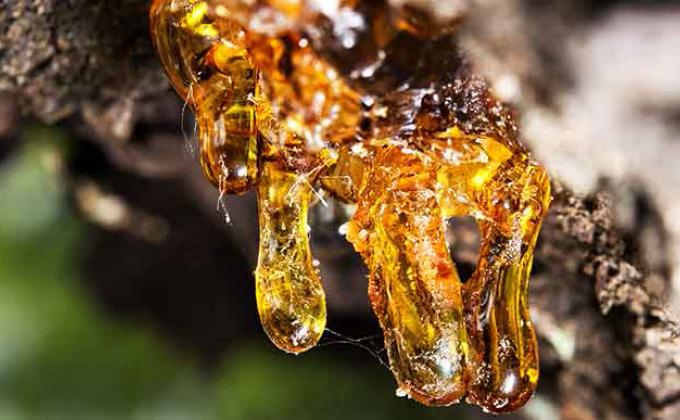
In the mountains, Sergei seriously injured a finger on his right hand, but there were no doctors and necessary medicines nearby. Time was wasted, the infection led to severe inflammation and suppuration of the wound. When he returned to the city a few days later, he had to go to the hospital. But delayed treatment did not help, gangrene began. The council of doctors came to a unanimous opinion: only finger amputation can save the hand. This verdict plunged Sergey - a professional musician - into complete despair: it would be the collapse of his entire career!
On the eve of the operation, he complained about his fate to an elderly woman strolling around the hospital yard. Having learned about the misfortune, she reassured: “Never mind, son! Come on, I'll show you something. " She led him to a pine tree that was growing nearby, and pointed to the already solidified stream of resin. “Zhivitsa - that's what you need! We must apply it to the wound. You can liquid, and you can also this - solid: crush into powder and sprinkle on the sore spot. "
No sooner said than done ... And the next morning - lo and behold! - the inflammation subsided so much that the surprised doctors decided to postpone the amputation and once again thoroughly clean the purulent wound. As a result, the next day the inflammation flared up with renewed vigor. The doubts that had arisen had disappeared: only amputation! And then Sergei, who had already believed in the miraculous power of the resin, simply escaped from the hospital. After a week of self-treatment with pine resin, he returned to the doctors. They couldn’t believe their eyes: the hopeless wound was completely cleansed, dried up and began to tighten with new skin ...
The recollection of the war years is also curious: “During the war, we often lacked even elementary medicines in the medical battalion. It is even impossible to imagine how many wounded we saved with this resin! Not only were the wounds treated with it, but pine resin was also given to chew. And also "vitamin tea" was prepared. They boiled pine needles in cauldrons and not only watered the poor fellows with this healing broth, but also washed the wounds, soaked the bandages. "
Any wound heals from gum powder or plaster with thick, viscous resin in a matter of hours. With sore throat, it is enough to put a piece of resin in your mouth and suck or chew like chewing gum. One or two days, and you can forget about the sore throat. And also "gum" saliva heals the gums, and once it gets into the stomach, it tightens internal ulcers very well ...
Gum, this resin oozing from a damaged coniferous tree (scientifically - turpentine), in appearance resembles fresh bee honey. The viscous and extremely sticky resin is absolutely insoluble in water, but it dissolves well with ordinary vegetable oil. Hands or tools soiled with resin can simply be wiped with oil and then washed with soap and water.
It is not for nothing that they called her Zhivitsa in Russia. Damaged conifers - cedars, pines, spruces, larch, fir - use this sticky sap to heal and heal their wounds, protecting the wood from the penetration of bark beetles, fungi and other harmful influences.
The healing properties of the resin have been known to mankind for many millennia - at least since the times of Ancient Egypt. For many centuries, it has been widely used for compresses and poultices, for bleeding, for the treatment of wounds and a variety of ailments. These are pulmonary diseases, rheumatism, digestive disorders, genitourinary infections, burns, ulcers, various skin diseases, etc. In the 16th century, resin was widely used to treat plague, because vapors of turpentine (and it is made from resin) have a bactericidal effect. For centuries, the inhabitants of Siberia and the Urals have used resin for pain relief and quick healing of wounds, for the treatment of abscesses, boils, ulcers, burns, cuts, and snake bites. In case of fractures, the sap was smeared with the injury site, and the bone healed faster. Toothache was treated with cedar resin in Siberia by applying it to the tooth and gums. Siberian healers knew how to use resin to treat cataracts and cataracts, to treat cancer, stomach and duodenal ulcers, and to strengthen the nervous system.
